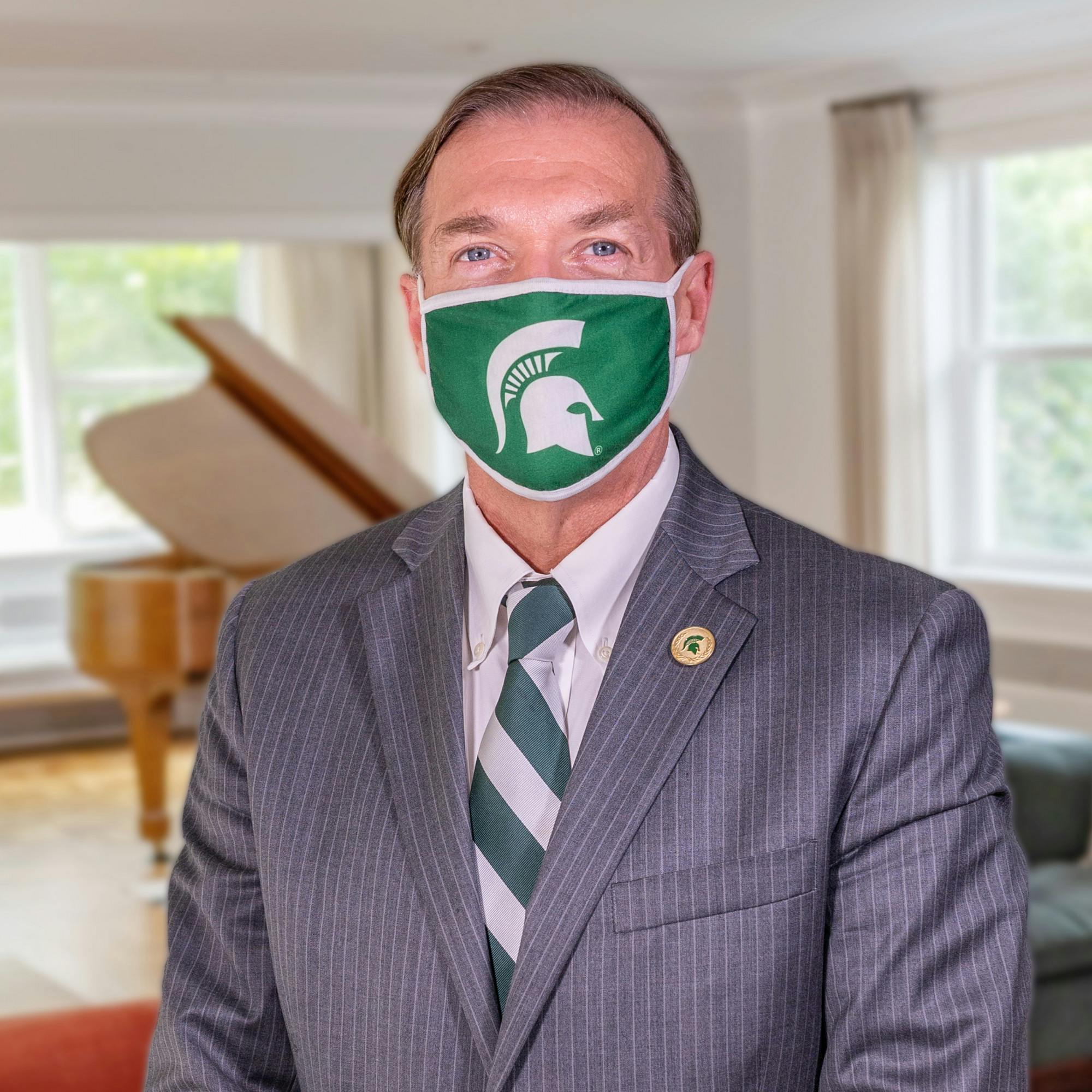President Samuel L. Stanley Jr. sat in front of the Beaumont Tower for an interview on a beautiful sunny day — only he wasn't at Beaumont Tower, it was his Zoom background. Stanley, like his student body, was navigating remote life, though students didn't make the call. He did.
With more knowledge on infectious diseases than most, Stanley says he was fixated on the virus that was sweeping the nation before others might have been. He was constantly weighing the options with what he knew and the newest science provided.
“I was probably paying attention to COVID-19 maybe before others were,” Stanley said.
Before officially taking office as the President of Michigan State University on Aug. 1, 2019, Stanley dedicated his days toward studying the ins and outs of infectious diseases. He earned a Bachelor of Arts in biological sciences from the University of Chicago and a medical degree from Harvard Medical School, but it was during 1983 at Washington University’s School of Medicine in St. Louis, Missouri, where Stanley started a fellowship in infectious diseases.
Since then, he’s held many different titles: chairperson of the National Science Advisory Board for Biosecurity, vice chancellor for research at Washington University and director of the Midwest Regional Center of Excellence for Biodefense and Emerging Infectious Diseases Research, or MRCE.
How has being an infectious disease specialist impacted your decisions made toward COVID-19?
“All during this time I think I’ve been very comfortable with the concept on how an infection can spread,” Stanley said.
When Stanley first became aware about COVID-19, he said it reminded him of the 2002 severe acute respiratory syndrome, or SARS, outbreak and the 2012 Middle East respiratory syndrome, or MERS, outbreak. Both of these dangerously contagious diseases were effectively combated by quarantine.
COVID-19, however, wasn’t. It continued to spread … and spread … and spread. This alarmed Stanley, compelling him to suspend in-person classes for the remainder of the spring semester.
“The way you’re going to prevent this is by preventing transmission,” Stanley said. “When you have to block transmission, then the key becomes: how do you change behaviors, and how do you get people to do things that may be contrary to what they’re used to doing, but are very necessary during a pandemic?”
What went into the decision to not bring students back to campus in the fall, and why was it made on Aug. 18, two weeks before classes started on Sept. 2?
Difficult questions needed to be answered before inviting students back to campus in the fall. And even after finding solutions to problems that pertained to campus life — reducing student density in the dorms, developing an on-campus capacity for testing without delays and creating a spacious classroom environment where everyone would be at least 6 feet apart — Stanley and his team remained optimistically cautious in his approach to reopening.
Nothing was certain.
In his May 27 email informing students about the plan to safely reopen campus, Stanley wrote, “A critical component to any decision we make now and in the future will be the status of the pandemic in our region, our state and the nation.”
One of the reasons, according to Stanley, to reverse the decision when he and his team did, of bringing students back to campus, was the surge of cases taking place at the in-person Universities of North Carolina and Notre Dame a couple weeks prior to MSU students moving onto campus.
“I think that’s the reason we made the decision to be made,” Stanley said. “It was primarily because my concerns were that based on plans that were relatively similar to ours we were seeing outbreaks that were difficult to contain.”
Stanley knew that it would be far more challenging to oversee off-campus activities, he said doubts began to arise in protecting on-campus life with his team’s plan at the time, specifically worries directed at overwhelming locations designated for quarantining.
And although on-campus testing, including the Spartan Spit Program, has continued to grow even after the announcement to suspend in-person fall classes, Stanley said testing alone won’t solve the problem of spreading the virus.
“Testing is really important; being able to test is really important, but testing doesn’t stop transmission,” Stanley said.
Even though smaller groups are allowed to gather under East Lansing’s ordinances, Stanley pointed out that hangouts with 10 or 12 people have still created an environment for the virus to breed.
Support student media!
Please consider donating to The State News and help fund the future of journalism.
What will it take to bring students back to campus?
On Sept. 25, the presidents from MSU, U of M and Wayne State all agreed that it would be highly unlikely to see in-person classes resume after the new year.
Stanley said he believes a majority of the students living on or around campus this semester are following the rules set in place by MSU and East Lansing. To get students back on campus, he said several factors must be taken into consideration.
Since it is a contagious disease, COVID-19 shouldn’t be stigmatized, Stanley said. But for those acting against the campus and city’s health guidelines, a shift in attitude about the pandemic must occur.
“The mantra that I have, when it comes to COVID-19: everyone's infected, including you,” Stanley said.
“And that’s how I look at what I do. I just assume that everybody I come in contact with potentially has COVID-19, and I assume I potentially have COVID-19. So it’s my responsibility to not infect them, and I’m expecting them to take responsibility to not infect me.”
Other measures Stanley said he’d take into consideration are finding ways for more people to test and analyzing data from current in-person universities to assure MSU students and faculty that coming back to campus will be safe.
Discussion
Share and discuss “How President Stanley's background influences MSU's COVID-19 decisions” on social media.







